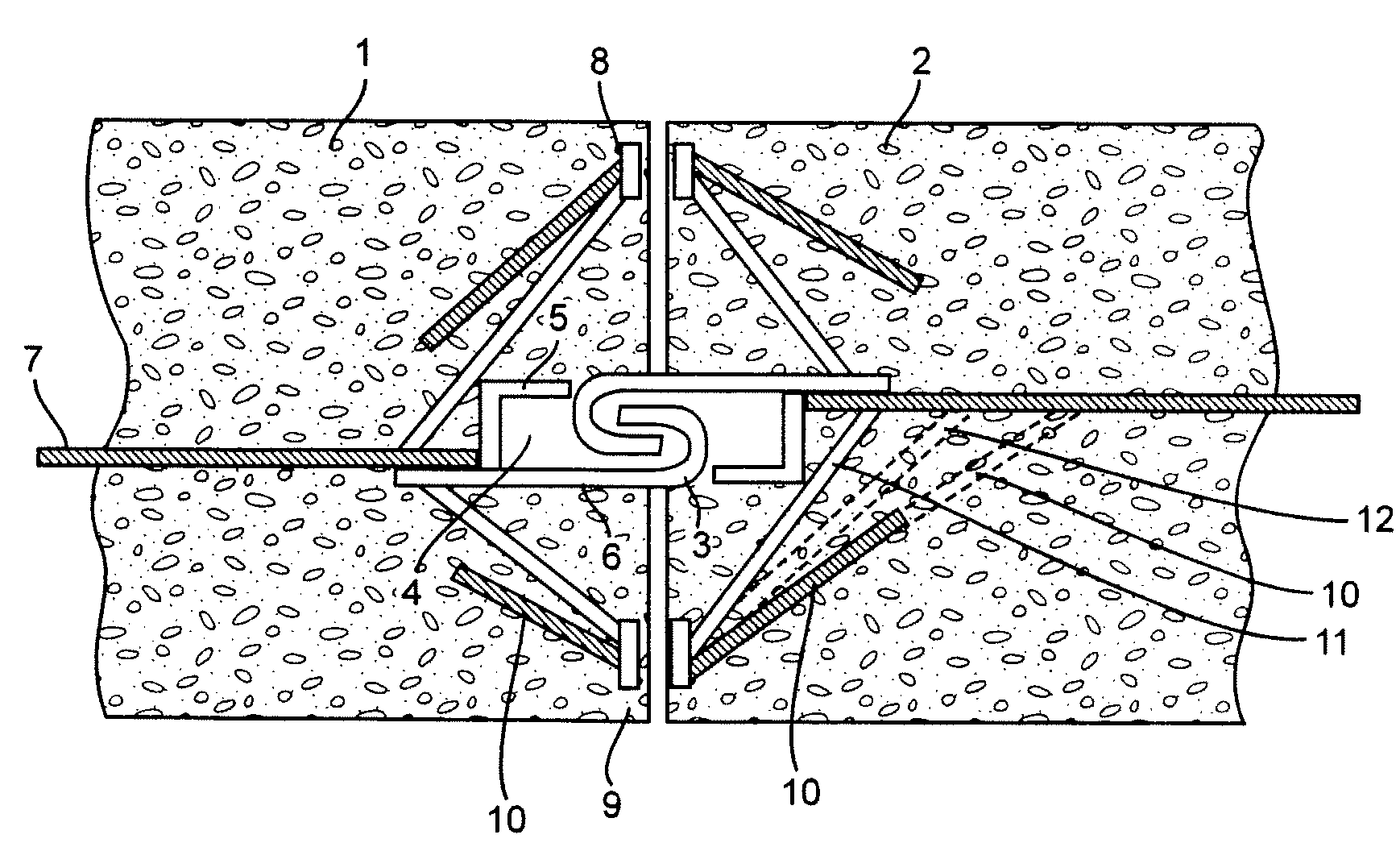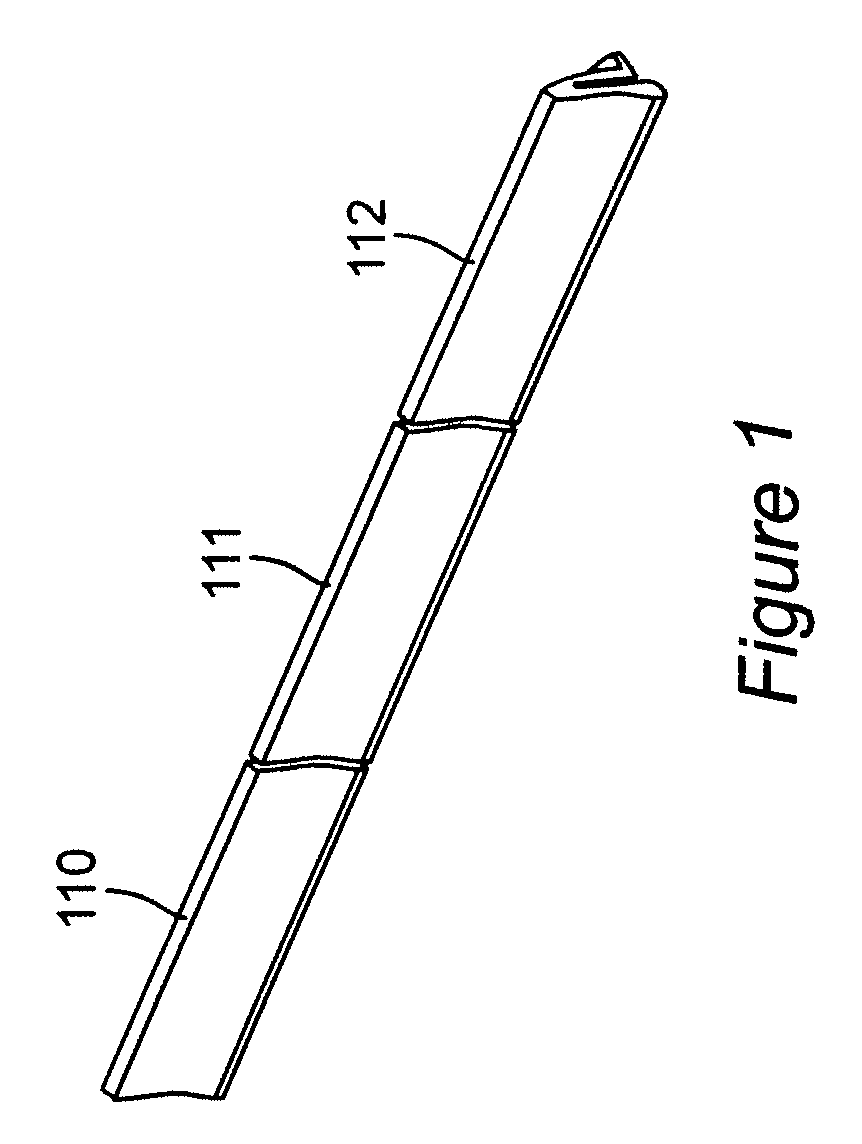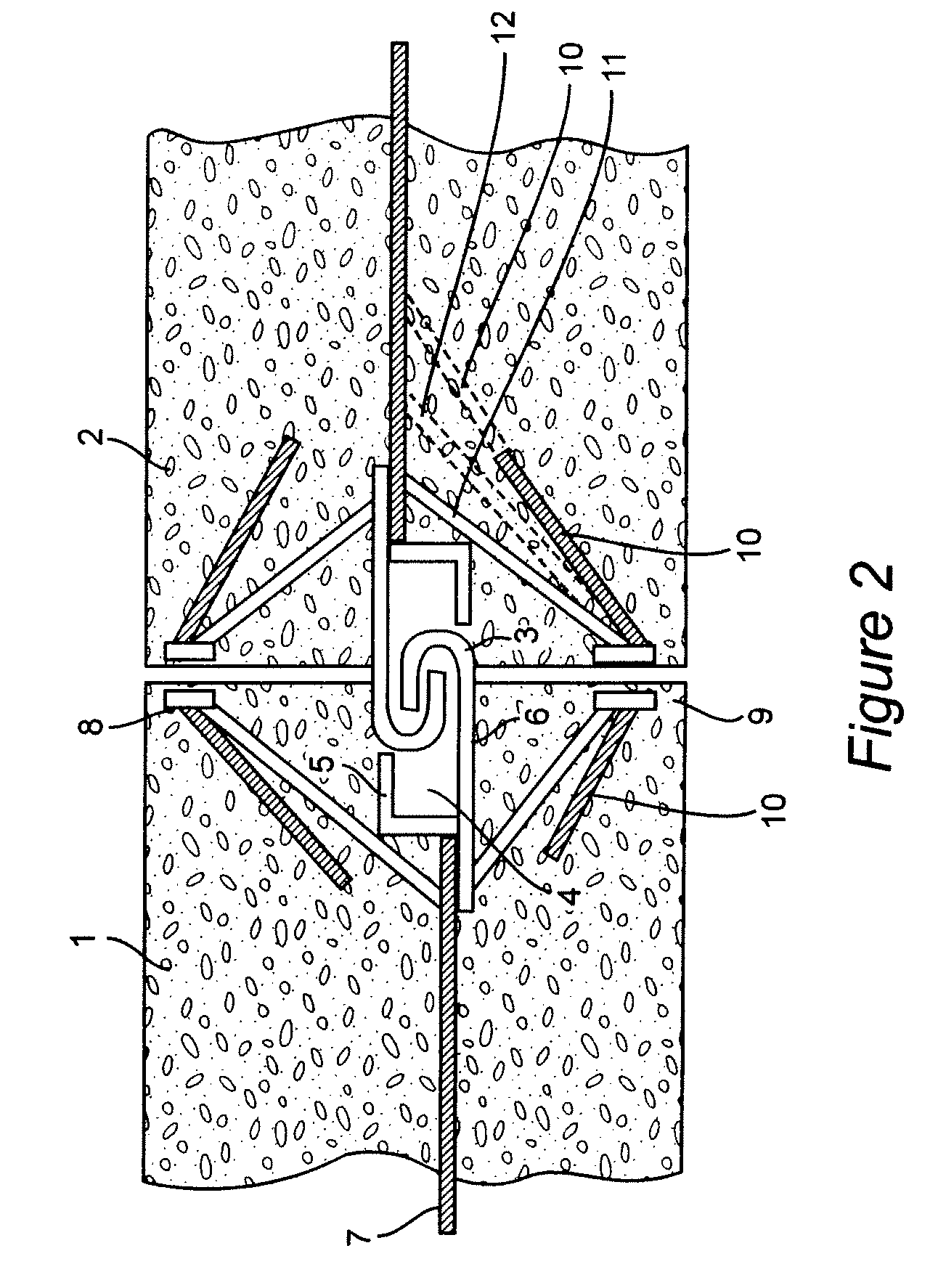Interlocking highway structure
a highway structure and interlocking technology, applied in the direction of roads, roadway safety arrangements, constructions, etc., can solve the problems of deflection of each section, achieve the effect of facilitating alignment and stability of the entire system, facilitating separation and improving crash performan
- Summary
- Abstract
- Description
- Claims
- Application Information
AI Technical Summary
Benefits of technology
Problems solved by technology
Method used
Image
Examples
Embodiment Construction
[0015]In FIG. 1 of the drawings, for exemplary purposes, three rigid upright sections 110, 111, and 112 linked end-to-end in alignment to form a highway barrier system. An unlimited number of sections can be linked together and positioned to follow the path of a roadway (or perimeter of a building in the case of building protection application) in the practice of the invention. Further, the outer shape and length of the upright sections 110, 111, and 112 can vary for different applications. The invention can be used in roadwork as well as security and other applications.
[0016]FIG. 2 of the drawings illustrates in detail the actual interlocking structure whereby two rigid upright sections 1 and 2 of the barrier system are maintained in alignment with one another. As illustrated, the hook member 3 in the cavity 4 of the end of each upright section projects outward from the section. A recessed flanged member 5 is attached to the connection member. Metallic welded bars 7 (only one bar i...
PUM
 Login to View More
Login to View More Abstract
Description
Claims
Application Information
 Login to View More
Login to View More - R&D
- Intellectual Property
- Life Sciences
- Materials
- Tech Scout
- Unparalleled Data Quality
- Higher Quality Content
- 60% Fewer Hallucinations
Browse by: Latest US Patents, China's latest patents, Technical Efficacy Thesaurus, Application Domain, Technology Topic, Popular Technical Reports.
© 2025 PatSnap. All rights reserved.Legal|Privacy policy|Modern Slavery Act Transparency Statement|Sitemap|About US| Contact US: help@patsnap.com



